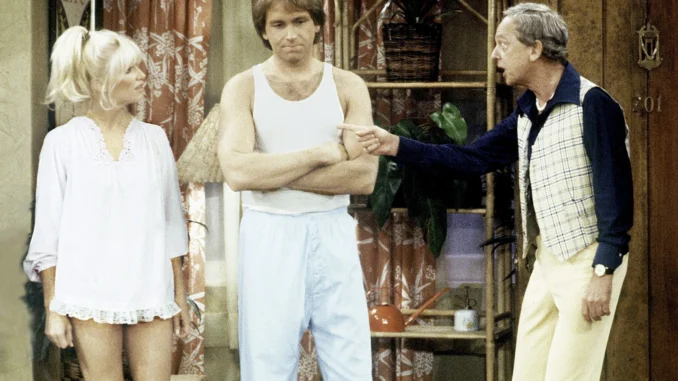
Introduction
Three’s Company, a sitcom that aired from 1977 to 1984, became a cultural phenomenon, capturing the hearts of millions of viewers. Beyond its comedic elements, the show offered a glimpse into American society during the 1970s. By examining the backgrounds of the main characters, we can gain a deeper understanding of the social and cultural climate of the era.
The Characters of Three’s Company
Jack Tripper
Jack Tripper, the central character, is a young man who poses as a woman to rent an apartment in a shared house. His deception is a reflection of the changing gender roles and societal attitudes towards sexuality during the 1970s. The show often explored themes of gender identity and the challenges faced by individuals who don’t conform to traditional norms.
Janet Wood
Janet Wood, a free-spirited and independent woman, represents the growing number of women who were entering the workforce and pursuing their own goals. Her character challenged traditional gender roles and stereotypes, reflecting the changing expectations for women in American society.
Chrissy Snow
Chrissy Snow, a naive and sheltered young woman, is a contrast to Janet. Her character represents the traditional values of the era, particularly those related to family and relationships. Chrissy’s journey of personal growth and independence reflects the changing attitudes towards women’s roles and expectations.
The Impact of the 1970s on Three’s Company
The 1970s was a time of significant social and cultural change in America. The show’s characters and storylines reflect many of these changes, including:
Changing Gender Roles
As mentioned earlier, the show explored themes of gender identity and changing gender roles. Jack’s deception and Janet’s independence challenged traditional stereotypes and expectations.
Sexual Liberation
The 1970s was a time of sexual liberation, and Three’s Company often touched on themes of sexuality and relationships. While the show was sometimes criticized for its suggestive content, it reflected the changing attitudes towards sexuality in American society.
Economic Uncertainty
The 1970s were a time of economic uncertainty, with high inflation and unemployment rates. The show occasionally addressed these issues, such as when Jack struggled to find a job or when Janet faced financial challenges.
Cultural Diversity
Although Three’s Company was primarily a white show, it did feature a few minority characters, including the landlord, Mr. Roper. This reflected the growing diversity of American society and the increasing visibility of minority communities.
Conclusion
Three’s Company was more than just a sitcom. It was a reflection of American society during the 1970s. By examining the backgrounds of the main characters, we can gain a deeper understanding of the social and cultural changes that were taking place during this time period. The show’s popularity is a testament to its ability to capture the spirit of the era and resonate with audiences of all ages.
FAQs
- Why did Jack Tripper pretend to be a woman?
- Jack pretended to be a woman in order to rent an apartment in a shared house. This was a reflection of the changing gender roles and societal attitudes towards sexuality during the 1970s.
- How did Three’s Company reflect the changing attitudes towards women’s roles?
- The show featured strong female characters, such as Janet and Chrissy, who challenged traditional gender roles and stereotypes. This reflected the growing expectations for women in American society.
- Did Three’s Company address any social or political issues?
- Yes, the show occasionally addressed issues such as gender identity, sexuality, economic uncertainty, and cultural diversity.
- Why was Three’s Company so popular?
- Three’s Company was popular due to its humor, relatable characters, and ability to capture the spirit of the 1970s.
- Was Three’s Company controversial?
- Yes, the show was sometimes criticized for its suggestive content. However, it also reflected the changing attitudes towards sexuality in American society.
